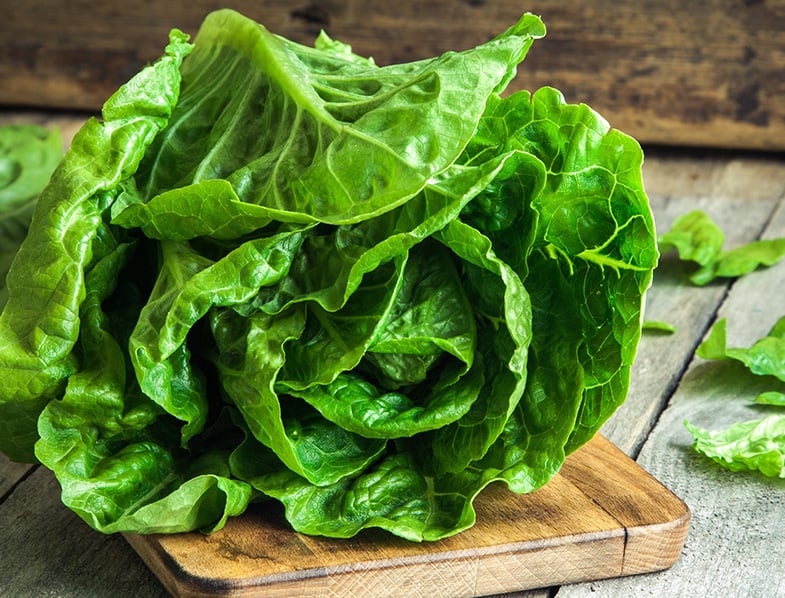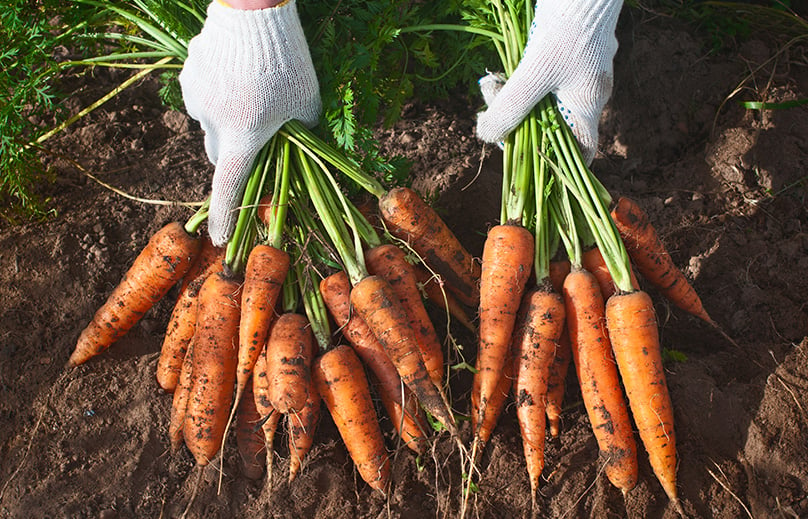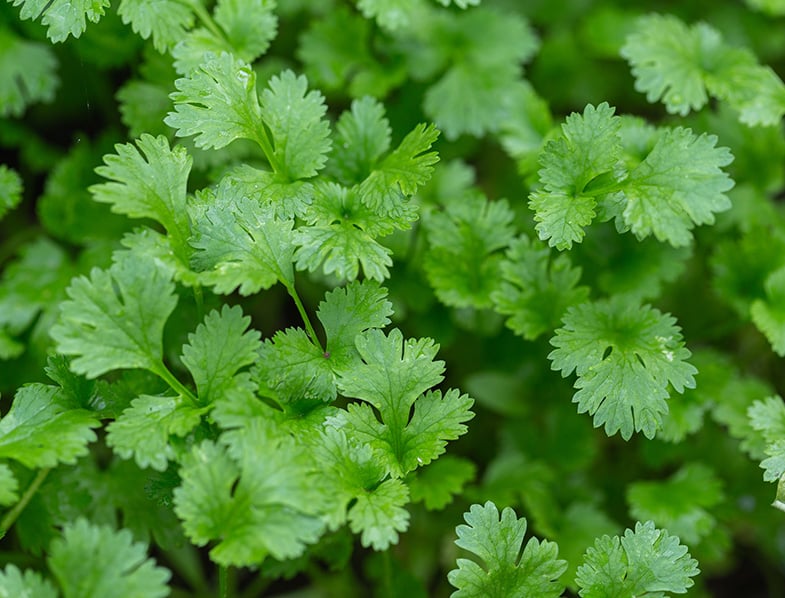Companion planting is a gardening technique that has been around for hundreds of years. It involves planting different types of crops together in a way that benefits both plants. When it comes to spinach, there are several companion plants that can help improve its growth and flavor. In this article, we will discuss 15 spinach companion plants that you can incorporate into your garden today.
Quick Facts
| Companion Plant | Category | Benefits |
|---|---|---|
| Lettuce | Vegetable | Similar nutrient needs, provides shade, shallow root system |
| Peas | Vegetable | Fixes nitrogen, provides shade, supports spinach growth |
| Radishes | Vegetable | Repels flea beetles, shallow roots, provides ground cover |
| Cabbage | Vegetable | Repels cabbage worms, different root depths |
| Onions | Vegetable | Deters aphids and spider mites, shallow roots |
| Cauliflower | Vegetable | Repels cabbage worms, different root depths |
| Carrots | Vegetable | Deep root system, provides shade, masks spinach scent |
| Strawberries | Fruit | Provides shade, attracts beneficial insects |
| Dill | Herb | Attracts parasitic wasps, deep root system |
| Mint | Herb | Repels aphids and flea beetles, provides shade |
| Cilantro | Herb | Attracts hoverflies, shallow root system |
| Basil | Herb | Repels flies and mosquitoes, provides shade |
Understanding companion planting
Companion planting is a popular gardening technique that has been used for centuries. It involves planting different crops together in a way that benefits both plants. By planting certain plants together, you can create a more diverse and healthy ecosystem in your garden.
Companion planting is based on the idea that certain plants can help each other grow better when planted together. This is achieved through a variety of ways such as repelling pests, adding nutrients to the soil, and creating a microclimate that is beneficial for both plants. When done correctly, companion planting can help increase yields, improve soil health, and reduce the need for pesticides.
Benefits of companion planting
Companion planting can provide many benefits for your garden. One of the main benefits is pest control. By planting certain crops together, you can repel pests or attract beneficial insects that will keep harmful pests at bay. For example, planting marigolds with tomatoes can help repel nematodes, while planting mint with cabbage can help repel cabbage moths.
Another benefit of companion planting is improved soil health. By planting a variety of crops together, you can create a more diverse ecosystem in your garden. This can help improve soil structure, increase soil fertility, and reduce soil erosion. Additionally, certain companion plants can provide shade or wind protection for other plants, creating a microclimate that is beneficial for growth.
How companion planting works
Companion planting works in a few different ways. One way is through pest control. Certain plants can repel pests when planted together. For example, marigolds are known to repel nematodes when planted with tomatoes. Another way that companion planting works is through mutual benefits. Some plants have specific nutrient needs that can be met by planting them with certain other plants. For example, beans are known to fix nitrogen in the soil, which can benefit plants like spinach that require nitrogen to grow.
Companion planting can also work by creating a habitat for beneficial insects. For example, planting flowers like sunflowers or zinnias can attract pollinators like bees and butterflies to your garden. These insects can help pollinate your crops, leading to higher yields.
It’s important to note that not all plants make good companions. Some plants can actually inhibit the growth of other plants. For example, planting onions with beans can stunt the growth of the beans. It’s important to do your research and choose companion plants carefully to ensure the best results.
Companion planting is a great way to create a healthy and diverse garden ecosystem. By planting certain crops together, you can improve soil health, repel pests, and increase yields. So why not give it a try in your own garden?

Best vegetable companions for spinach
Spinach is a versatile and nutritious vegetable that can be used in a variety of dishes. It is easy to grow and maintain, making it a great addition to any garden. If you’re planning on growing spinach, consider planting it alongside these vegetable companions:
Lettuce

Lettuce is a great companion for spinach because it shares similar nutrient needs. Both plants require plenty of nitrogen to grow, and lettuce can help provide this nutrient when planted together. Additionally, lettuce can provide shade for spinach during hot summer months, which can help keep it from bolting. Lettuce also has a shallow root system, which means it won’t compete for nutrients with spinach.
Peas

Peas are another great companion for spinach. Like beans, peas are known to fix nitrogen in the soil, which can benefit spinach. Additionally, peas can provide shade for spinach during hot summer months. The tendrils of peas can also help support the growth of spinach, keeping it upright and preventing it from falling over.
Radishes

Radishes are an excellent companion for spinach because they can help repel certain pests. Radishes contain compounds that are known to repel flea beetles, which can be harmful to spinach plants. Additionally, radishes have shallow roots, which means they won’t compete for nutrients with spinach. They also grow quickly, which can help deter weeds and provide ground cover for the spinach.
Cabbage

Cabbage is a good companion for spinach because it can help repel pests like the cabbage worm. Additionally, cabbage and spinach have different root depths, which means they won’t compete for nutrients. Cabbage also has a deep root system, which can help improve soil structure and prevent erosion.
Onions

Onions are another great companion for spinach. They can help deter pests like aphids and spider mites, which can be harmful to spinach. Additionally, onions have a shallow root system, which means they won’t compete for nutrients with spinach. Onions also have a pungent smell, which can help mask the scent of the spinach and deter pests.
Cauliflower

Cauliflower is a good companion for spinach because it can help repel certain pests. Cauliflower contains compounds that are known to repel cabbage worms, which can be harmful to spinach plants. Additionally, cauliflower and spinach have different root depths, which means they won’t compete for nutrients. Cauliflower also has a deep root system, which can help improve soil structure and prevent erosion.
Carrots

Carrots are another great companion for spinach. They have a deep root system, which means they won’t compete for nutrients with spinach. Additionally, carrots can help provide shade for spinach during hot summer months. Carrots also have a sweet smell, which can help mask the scent of the spinach and deter pests.
By planting spinach alongside these vegetable companions, you can create a thriving and diverse garden that is both beautiful and productive. Happy planting!
Fruit and herb companions for spinach
Fruits and herbs can also make great companions for spinach. Here are some of the best fruit and herb companions for spinach:
Strawberries

Strawberries are a great companion for spinach because they can help provide shade during hot summer months. Additionally, strawberries are known to attract beneficial insects, which can help keep harmful pests at bay. Strawberries are also packed with nutrients such as vitamin C, fiber, and antioxidants, making them a healthy addition to any garden. They are also a versatile fruit that can be used in a variety of dishes, from salads to desserts.
Dill

Dill is another great companion for spinach. It is known to attract beneficial insects like parasitic wasps, which can help keep harmful pests at bay. Additionally, dill has a deep root system, which means it won’t compete for nutrients with spinach. Dill is also a flavorful herb that can be used in a variety of dishes, from dips to soups. It is also a good source of vitamin C, calcium, and iron.
Mint

Mint is a good companion for spinach because it can help repel certain pests. Mint contains compounds that are known to repel aphids and flea beetles, which can be harmful to spinach. Additionally, mint can help provide shade for spinach during hot summer months. Mint is also a refreshing herb that can be used in a variety of dishes, from drinks to desserts. It is also a good source of vitamin C and antioxidants.
Cilantro

Cilantro is another great companion for spinach. It is known to attract beneficial insects like hoverflies, which can help keep harmful pests at bay. Additionally, cilantro has a shallow root system, which means it won’t compete for nutrients with spinach. Cilantro is also a flavorful herb that can be used in a variety of dishes, from salsa to curries. It is also a good source of vitamin C, vitamin K, and potassium.
Basil

Basil is a great companion for spinach because it can help repel certain pests. Basil contains compounds that are known to repel flies and mosquitoes, which can be harmful to spinach. Additionally, basil can help provide shade for spinach during hot summer months. Basil is also a flavorful herb that can be used in a variety of dishes, from pasta to pizza. It is also a good source of vitamin A, vitamin C, and antioxidants.
Conclusion
There are many different companion plants that can be beneficial for spinach. By incorporating these plants into your garden, you can help improve the growth and flavor of your spinach plants, while also reducing the need for harmful pesticides. These fruit and herb companions not only add beauty to your garden but also provide a variety of health benefits. Try planting some of these spinach companion plants today and see the benefits for yourself!
Spinach FAQS
What grows well with spinach?
Spinach grows well with various vegetables, fruits, and herbs. Some great companion plants for spinach include lettuce, peas, radishes, cabbage, onions, cauliflower, carrots, strawberries, dill, mint, cilantro, and basil.
Can spinach be planted with herbs?
Yes, spinach can be planted with herbs. Some good herb companions for spinach are dill, mint, cilantro, and basil. These herbs provide various benefits such as attracting beneficial insects, repelling pests, and providing shade for spinach plants.
Can marigolds be planted with spinach?
Marigolds can be planted with spinach. Marigolds are known to repel nematodes and other pests, making them a beneficial companion plant for various vegetables, including spinach.
Can spinach be planted close together?
Spinach can be planted close together, with a spacing of about 3 to 4 inches apart. Close spacing allows spinach to grow in clusters, providing shade to the soil, which helps retain moisture and suppress weed growth.
Does spinach need full sun?
Spinach grows best in partial to full sun, with at least 3 to 4 hours of sunlight per day. It can tolerate some shade, especially during hot summer months, when the shade can help prevent bolting.
How often should you water spinach?
A: Spinach should be watered consistently, with the soil kept evenly moist. Generally, watering spinach once or twice a week is sufficient, but it may need more frequent watering during hot and dry periods. It’s important to avoid overwatering, as this can lead to root rot and other issues.
